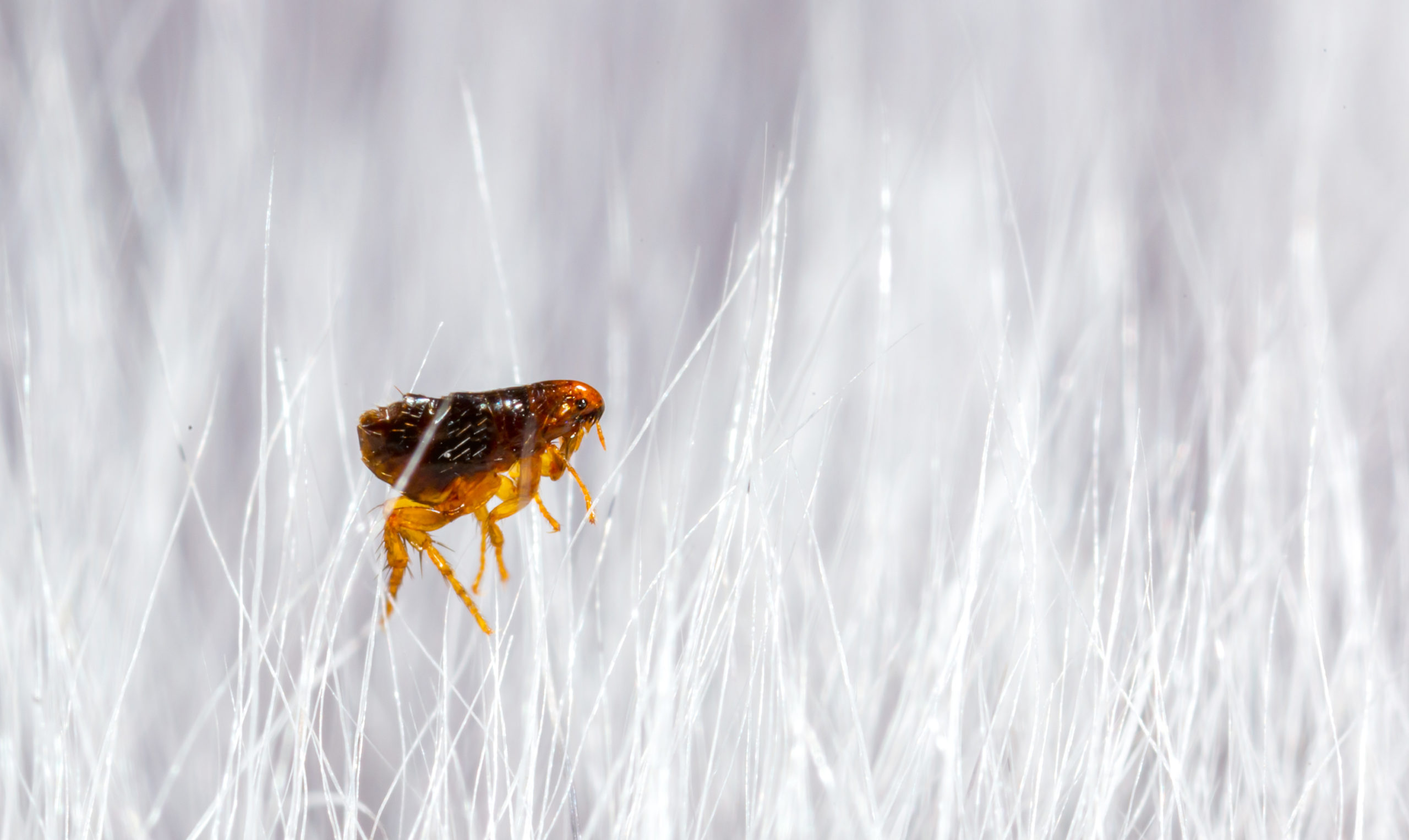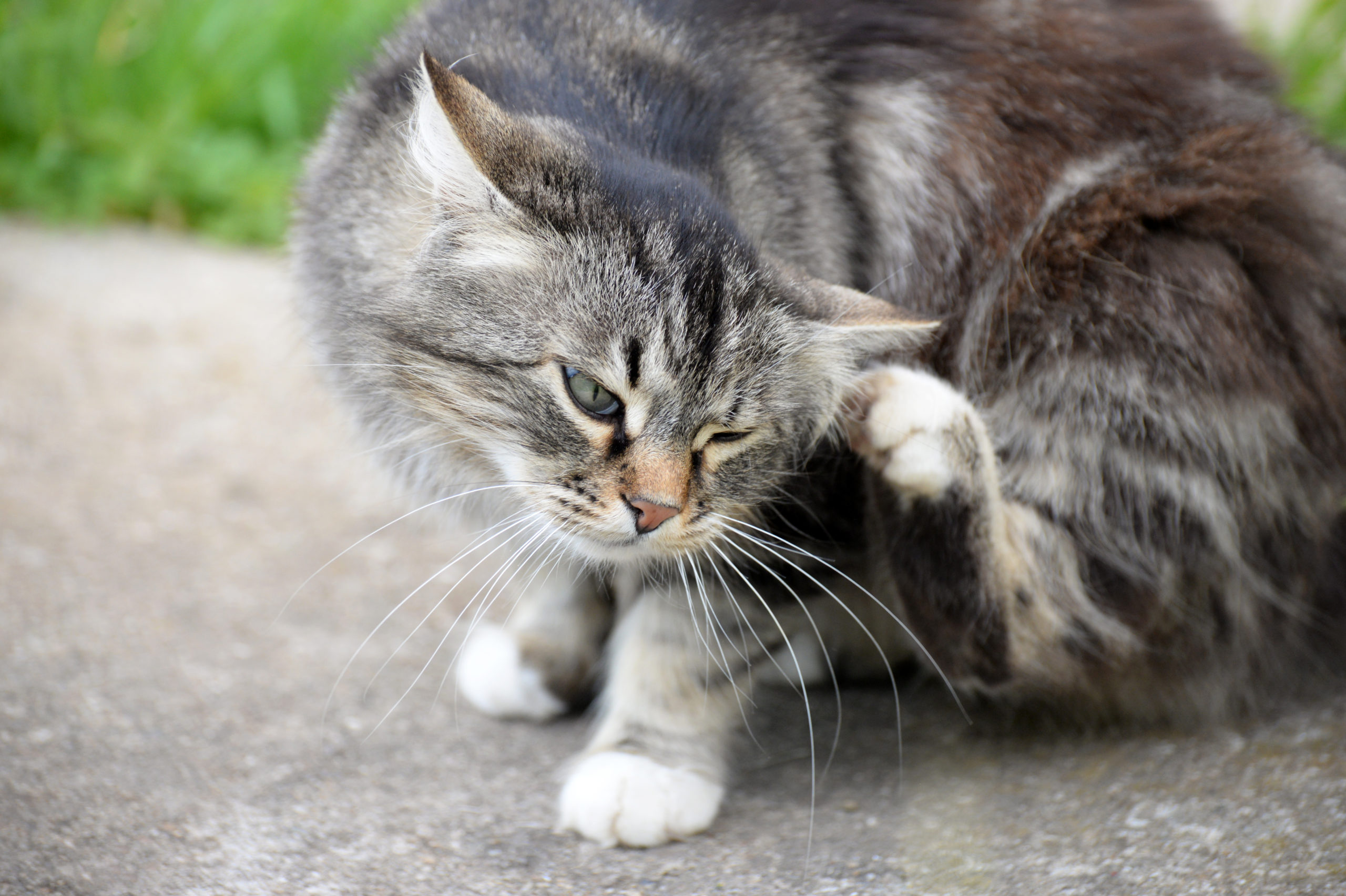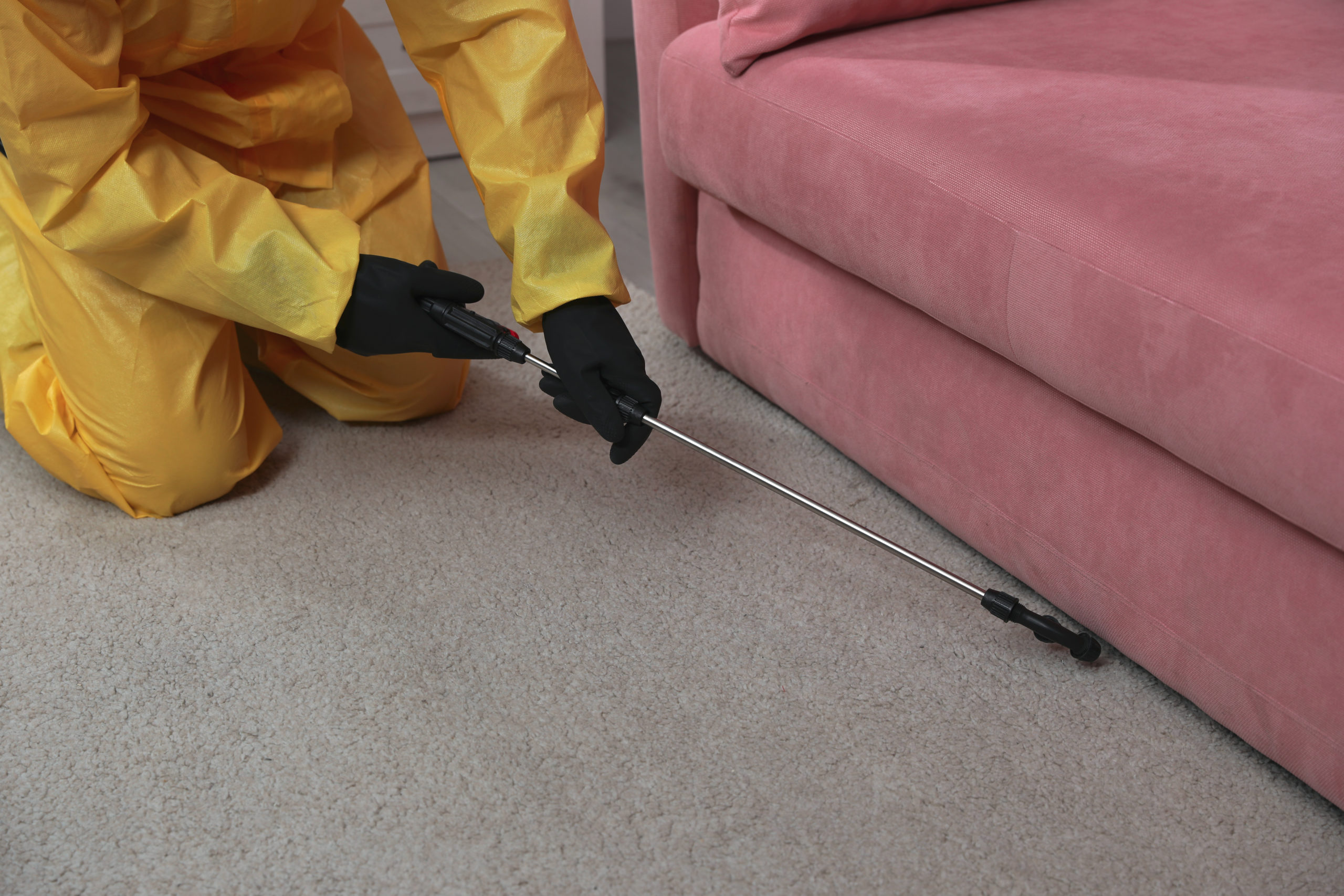The Facts About Fleas
The Facts About Fleas
We tend to associate fleas with just living on pets and causing them to itch, but there is more to these tiny pests than meets the eye. Their tiny size and natural ability to hide within the fur or hair of their hosts allows them to feed without being spotted until it’s too late. It doesn’t help that they can lay multiple eggs every day that they have protein from blood, which means a small flea problem can escalate literally overnight. Let’s take an overview journey into the world of fleas and why they are unfortunately not just a problem for our pets…
Basic Stats

Fleas have a life cycle typical to insects, with the added task of feeding on blood in between their stages. They start as an egg, then hatch about 1-10 days later as larva and live off of blood and flea feces, or flea dirt (gross!). The length of time in between these two stages fully depends on the humidity and general conditions of their environment. The larva will then create a cocoon and spend its pupa stage protected inside here. The fully formed flea adult will only leave its cozy home when it knows that it has a nearby host to feed upon. Fleas almost seem to have superpowers in a way, as they can detect the movement, heat, vibrations, and breath of mammals! The flea will then live on its host and mate almost immediately after feeding. It can lay about 40 to 50 eggs within the next 24 hours, and the flea life cycle begins in a new generation of annoying pests.
Out of the couple thousand of flea species worldwide, there are about 300 species that we see in the U.S. But the majority of these are deep in the wilderness and rural areas, where they only have access to whatever wildlife is grazing there. The four most common species we see in populated settings are the cat flea, dog flea, oriental rat flea, and ground squirrel flea. Interestingly enough, these fleas do not stick to their titular animals. This is exactly how flea diseases spread, but more on that later.
Fleas get around primarily by jumping, like in the cartoons, and they can leap up to six feet high. This explains how they can go from host to host, or from the ground to a host. Contrary to popular belief, they do not typically go from pet to pet. Most domesticated dogs and cats that live with families receive some form of flea and tick treatment, so they do not carry them as often. It is more common for dogs and cats to contract fleas from thick brush or contact with a stray or wild animal than from a fellow docile pet.
How Do They Choose a Host?

Since we know the basic logistics of how pets get fleas, let’s look into the process of fleas finding their ideal host. The only basic criteria they have is that it needs to be a mammal, as we are warm-blooded. However, they do prefer animals over humans since animals have fur or thick hair in which to hide the fleas while they feed. Since fleas can overwinter as larvae or pupae, they don’t have to wait for the surge in new insect populations that many other insects do. And if fleas stay inside a warm home to infest the pets there, they can potentially keep feeding throughout the winter if they need to keep their energy up.
Fleas find their next target through a variety of methods, many of which are heightened in the summer when mammals are naturally warmer. Fleas can sense movement, vibrations, body heat, and breath. More specifically, they detect carbon dioxide much like mosquitoes do when they are searching for a blood source. Fleas tend to stay on the same food source for the majority of their lives, if not for their entire lives. If the feeding is good and they have room to lay eggs, why leave? This is exactly why flea treatments for pets are still incredibly important. A dog or cat who regularly receives flea prevention is far more likely to live their life without experiencing fleas, as long as they are also bathed and don’t venture into thick greenery all the time. But more on that later.
One thing to note is that, despite their specific names, fleas can go from animal to animal as they choose. Dogs can have cat fleas, and cats can have dog fleas. What a confusing time! These fleas, along with the ground squirrel flea and oriental rat flea, can all be found on various animals and even people. They likely got their names because they were found on that specific animal most often, but they do not necessarily have to stick with their namesake. Because of this, fleas can carry diseases like many other bloodthirsty pests.
Diseases and Allergies

Unfortunately, like other biting pests, fleas can carry diseases and cause allergy symptoms in their hosts. A flea becomes a carrier of certain diseases when it bites an infected animal, then moves on to another creature. They tend to bite around the neck and shoulders of any mammal they jump onto, as well as near the tail on animals that have one. The bites are usually found in clusters since the flea and its offspring stay in the same relative area. Flea bites are itchy and irritated red bumps, much like those of a mosquito. This is because fleas also inject their saliva into the bite, which causes irritation in the skin of the mammal.
The host can experience allergy symptoms as a result, since they are allergic to the flea’s saliva. Symptoms include hair loss, scabbing, redness, and excessive itchiness. But beyond the annoying allergy symptoms, fleas can also transmit dangerous diseases if they are infected. One is plague, which is commonly found in the ground squirrel flea and oriental rat flea. It is more common in rural areas, especially in the western U.S. The main way to contract it is by handling an animal that is infected. Another disease is flea-borne typhus. This is typically found in cat fleas and original rat fleas. It is also more common in the western half of the country. The most common way to get it is through the droppings of fleas, or flea dirt.
The third disease is more commonly known: cat scratch disease. This can be transmitted through flea droppings, a bite from an infected flea, or a scratch from an infected cat. It can be found anywhere in the country and from any kind of flea. The fourth common disease is less about touching anything and more about actually ingesting the flea. There can be parasites in fleas, which are transmitted if the flea is swallowed. This one is more prevalent for pets that are on the ground a lot and crawling young children. Tapeworm is probably the most common parasite, and it is not always detected since there aren’t many clear symptoms. This is why flea treatment is so important, as a flea bite can be more than just annoying.
Why Are They So Difficult to Treat?

Since fleas are so small and basically useless when they aren’t constantly consuming blood, it is reasonable to think that they would be easy to eliminate. But as many of us know, this is not the case. Receiving professional pest control is a multi-step process for fleas due to their life cycle and resistance. The initial treatment eliminates the adult fleas, but not the eggs or protected pupae. They cannot be penetrated by the treatment at this time. When the eggs hatch 10-14 days later, the next treatment will take place to eradicate the remaining fleas. Eggs fall off of the host, like the dog or cat, where they lay around the most, so treating these areas is essential in eliminating the problem.
But even when the pros are handling the flea problem, there is one task that is even more important in eliminating fleas: treating your pets. Many pest control companies require this as a preliminary step to providing services, as there is basically no point in having pest control if the pets remain untreated. The fleas could just hide out on the pet while the pest treatments are being sprayed and laid out, so it would be useless. If the home is infested with fleas, there is a high risk of reintroduction after the services are done. They can hide out and avoid the treated areas, then just go right back to living on the pets and reproducing in the home. But by getting treatments for your pets from the vet, you will cut down on the risk of a full flea infestation by a huge margin. Not every flea control service is this intense, if there is not a major problem. Many apartment and townhome residents who need to have flea treatments before moving out often only need a one-time service, since there is not a city of fleas living in the home. While fleas are great hiders and can remain in the folds of our furniture and fabrics as long as they can, they are not impossible to treat.
Don’t Flee From Fleas When You Have Pest Control!

Pest control services can be extremely helpful with a flea problem, but with a couple of crucial tasks done on your part first. The most important step in controlling fleas is to have any pets in your home treated first. If this isn’t done, there is no point in calling pest control. Fleas only survive because they are constantly being fed protein through warm blood, so they will continue to do so unless your dog or cat is treated. If you have not already, talk to your veterinarian about treatment and prevention options. There are both topical and oral methods available depending on the pet and the state of the flea problem, so it is a good idea to get the specific treatment needed.
Besides treating your pet, it is also important to vacuum the carpets and wash any bedding on a regular basis. Fleas survive in these areas in between feedings, but they can’t if the fabrics are constantly disturbed. Keep your pets bathed and inspect their fur after they have been in thick brush or around other animals. If you go on a hike or go out in the wilderness in general, make sure to spray any exposed skin (besides your face) with a bug spray that has DEETs. This is the substance that actually repels pests, so check the label before using.
If there is still a flea issue after all of these steps have been taken, pest control services is the way to go. The way it typically works is to have follow-up treatments about 10-14 days after the initial treatment. This is done to eliminate all of the grown fleas that are now out of their protective casings. It is still important to vacuum during this time to remove all fleas that have dropped from their hosts or from furniture. Our knowledgable technicians are here to help with your flea issues or any other pest problems. Contact us to learn more about how our EPA-approved treatments can leave your home free of fleas!
Citations
Fleas. (2020, August 13). Centers for Disease Control and Prevention. Retrieved October 12, 2022, from https://www.cdc.gov/fleas/index.html
Fleas. (n.d.). Pest World. Retrieved October 12, 2022, from https://www.pestworld.org/pest-guide/fleas/flea/
Shetlar, D.J. & Andon, J.E. (2012, January 5). Fleas. Ohioline OSU Extension. Available at https://ohioline.osu.edu/factsheet/HYG-2081-11 (Accessed on October 12, 2022).
Request a Free Quote Today
(We do not share your data with anybody, and only use it for its intended purpose)


